Alright … enough of Kyoto (really, I don’t think there’s ever enough of Kyoto … so many places left on the to-do list for another visit). But if it was Wednesday, it was time to move on to Koyasan, a UNESCO World Heritage site and Japan’s most sacred site (I think I read that somewhere; don’t quote me. But if it isn’t, it should be).
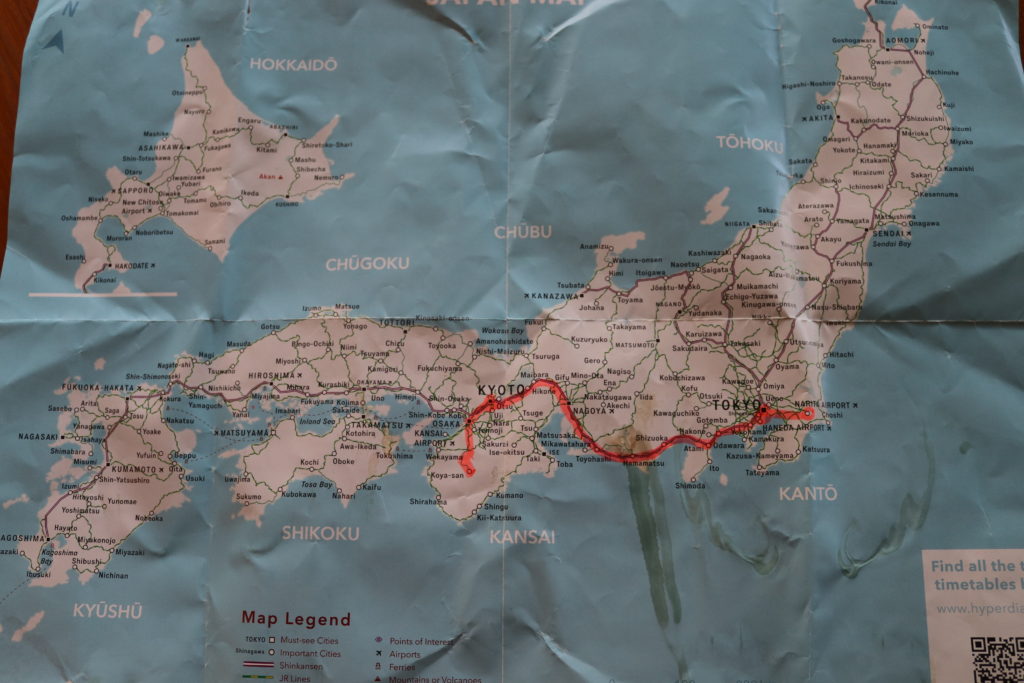
Koyasan, or Mt Koya, is a settlement of Shinto shrines and Buddhist temples. Founded in 806 by a Japanese Buddhist monk by the name of Kukai, or posthumously Kobo Daishi, Koyasan is the center of Shingon Buddhism. For you folks in Ontario … picture a small town like Almonte. Then add 117 temples. And a university. And the most amazing cemetery ever. Really. 200,000 tombstones. But more about that (and more photos than you’ll ever care to see of it) in the next post.
Women were banned from Koyasan until 1872-ish, so a 17-mile women’s pilgrim route sprang up around the town allowing women to honor the shrines without entering the town (Grrr). At one point I had planned to follow the route until I found out there were bears in them there woods. I’m willing to brave boars and monkeys. But. Not. Bears. So I kept to town.
About 52 of the temples in Koyasan offer accommodation to tourists and pilgrims. So many, many months ago we made reservations (through Expedia!!) for two nights at Saizen-in Temple.
But first we had to get there. Trains, more trains, a cable car, and a bus. Three of us had decided to make the six-hour pilgrimage to Koyasan. We sent our luggage off to Miyajima Island which would be our next stop after Koyasan (more on that wonderful Japanese invention later) and headed to Koyasan with backpacks only.
We left Kyoto at rush hour on a busy train headed to Osaka. Then transferred to a train to Shin-Imamiya where we hopped off a stop too early and back on before the doors closed and the train moved on.

The train from Shin-Imamiya to Gokurakubashi was decidedly less crowded and the passengers became fewer and fewer the closer we got to Gokurakubashi. To the point where I felt like we were in Murder on the Orient Express … on a train in the middle of nowhere, each of looking at everyone else wondering what their story was.
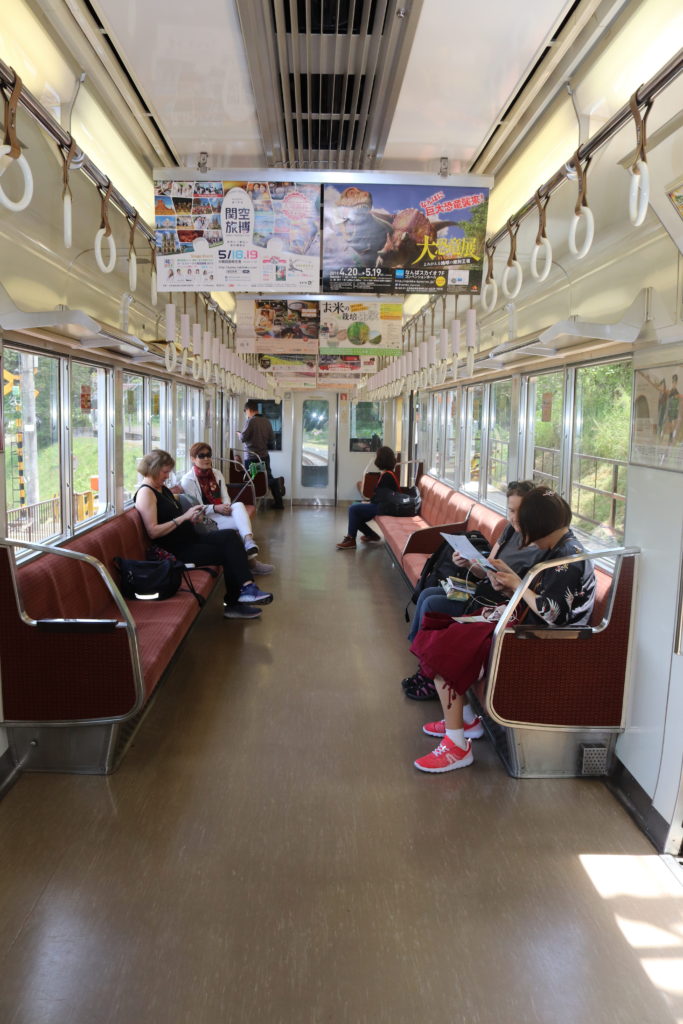
At Gokurakubashi (you’d think I could spell that by now without looking at my notes?) we boarded a cable to car to the top of Mt Koya where buses were waiting to take us into town. A further five-minute walk (after Deborah went into a restaurant to ask for directions) got us to our Temple. Complete with cartoon character. But really, there was nothing Disney about the Saizen-in Temple.

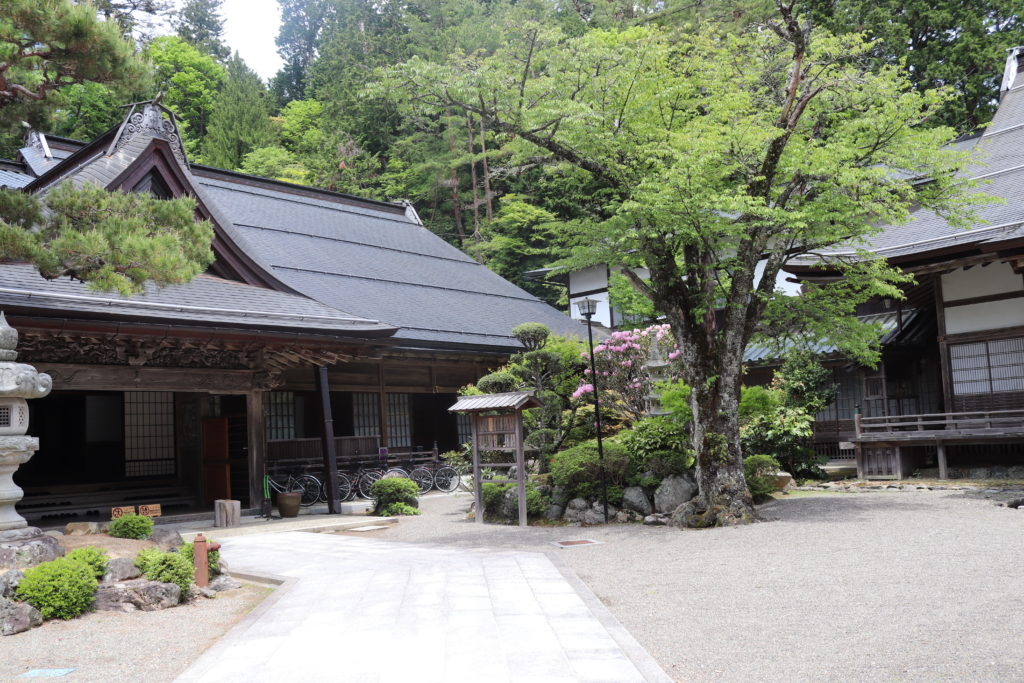
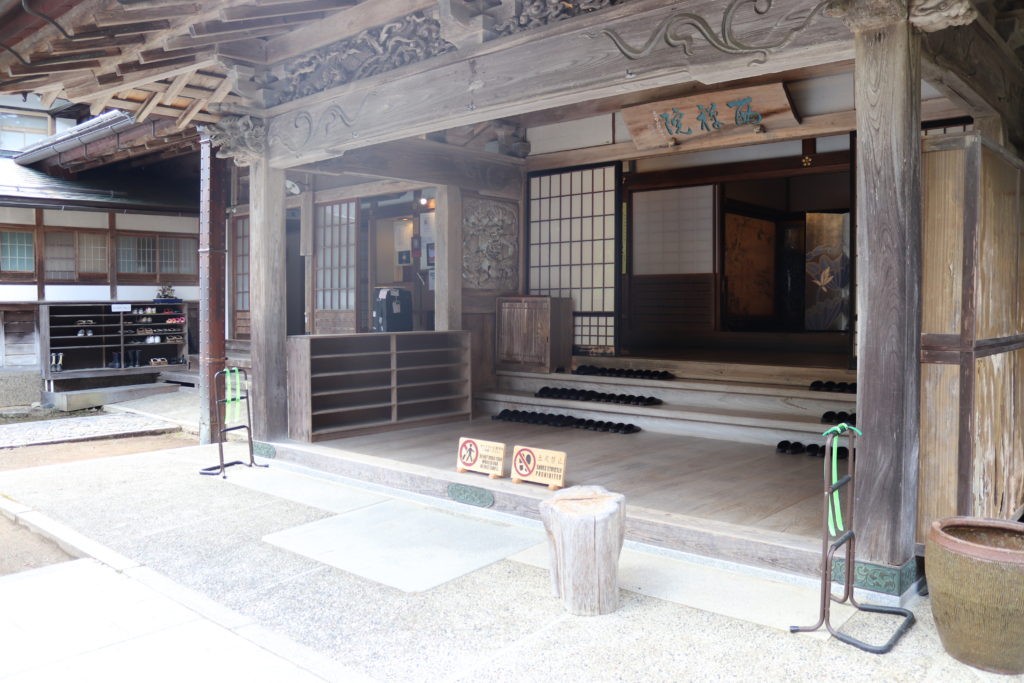
Rows of slippers lined the steps to enter the Temple. We took off our shoes, stored them on the shelves and entered. We didn’t expect to be able to check in, but hoped to drop our bags. But surprisingly, the somewhat stern monk (is there really any other kind, I suppose?) took our info and our bags and led us to the room which the three of us would share for the next two nights.
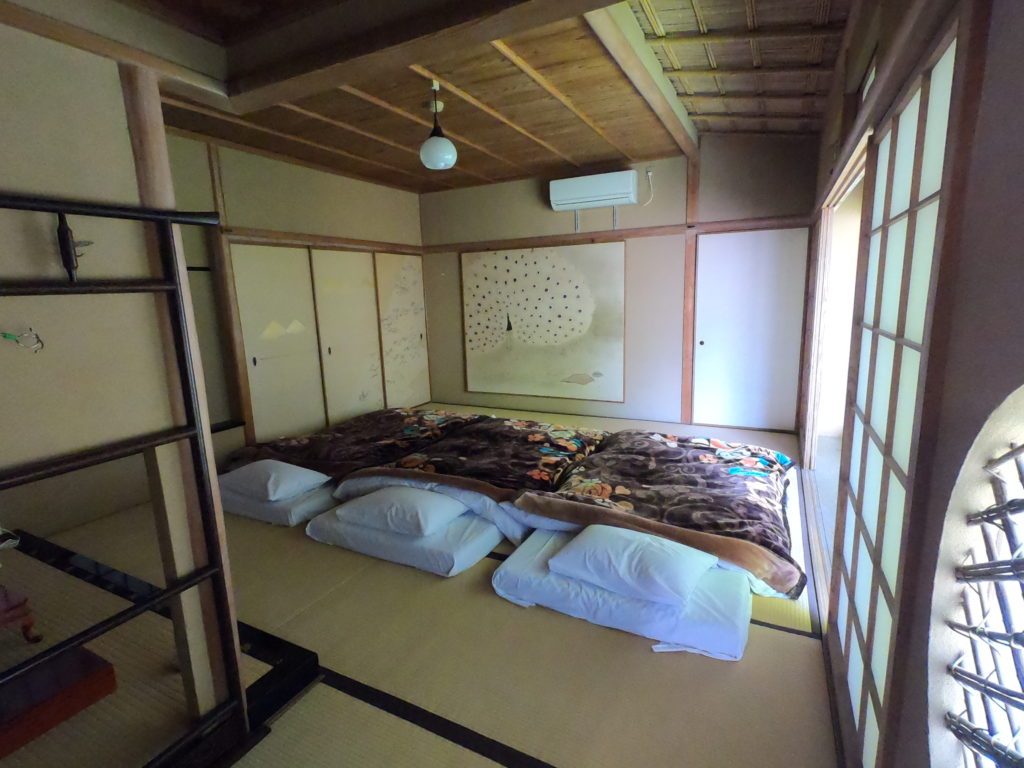

We actually had quite the suite. We had a living room (?), a dining room, a bedroom, and a private bathroom (toilet + sink) next door. Once we rearranged the futons to give ourselves some breathing snoring room, we headed out for a quick walk around town. Needed to be back for our 5:30 dinner, to be served in our suite.
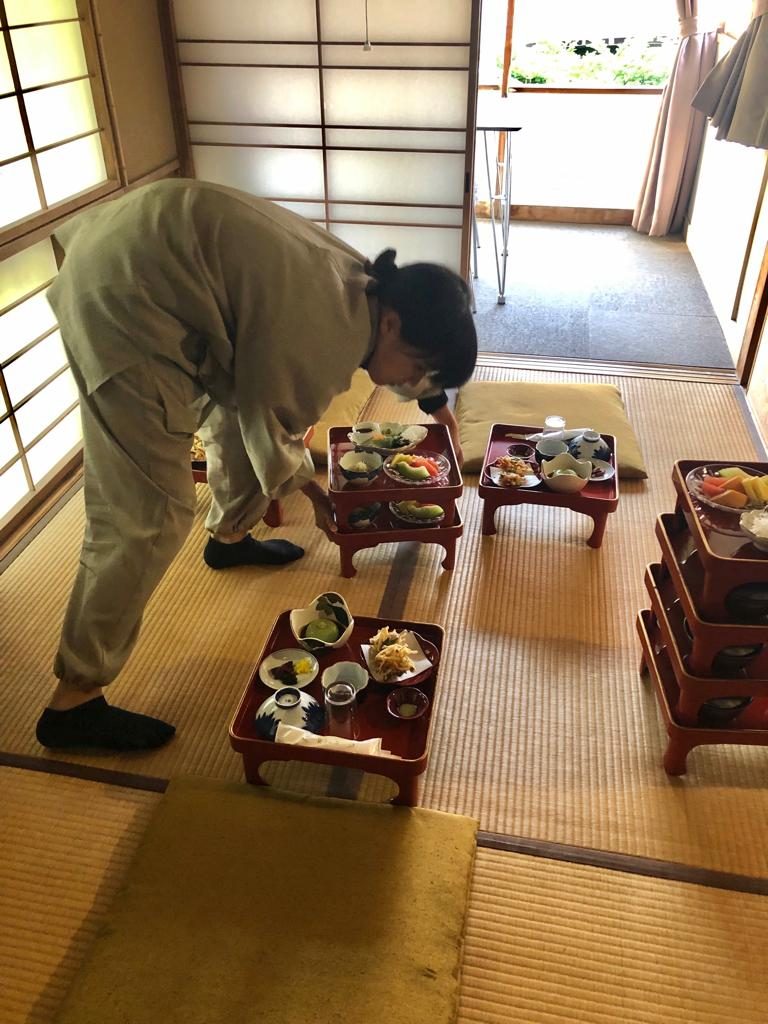
Dinner was shojin ryori—vegan Buddhist cuisine. Three trays and … a dozen courses (?) each. A fascinating experience, if not … hmm … texturally unique? The meal started off great with a wonderful miso soup and ended with some lovely fresh fruit. In between there were some interesting choices and some challenges. It was a little embarrassing that there was much food left when the monk came back to pick up our trays.
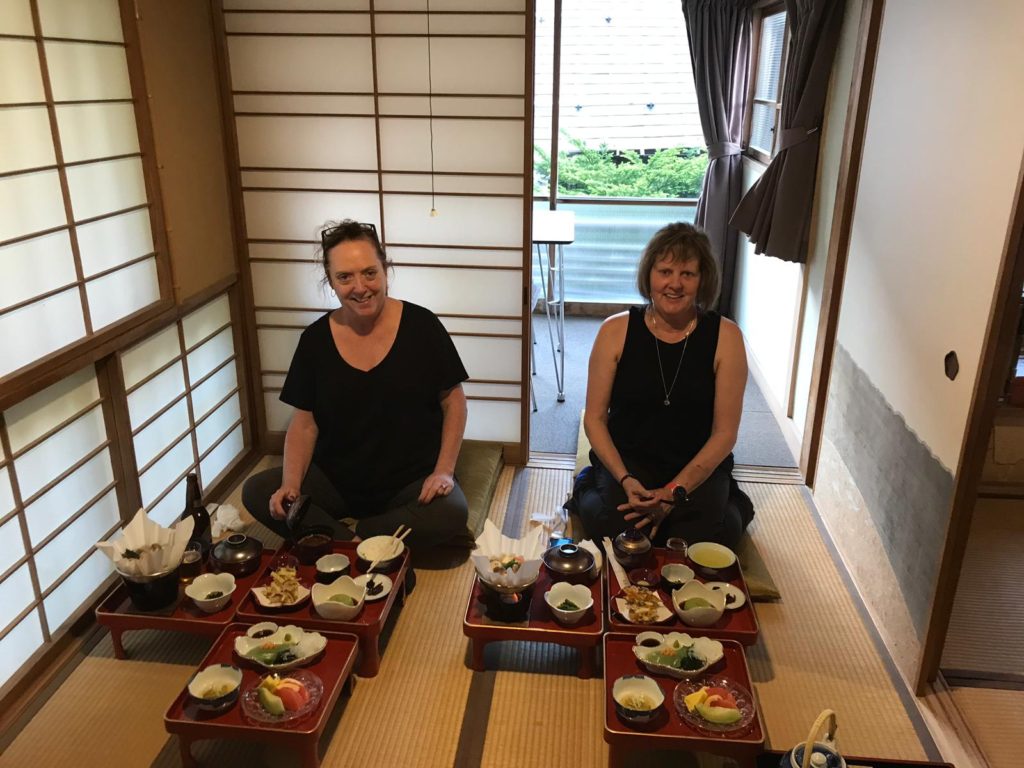

The sun set fairly early in Japan in May, so by 7p we were ready to crawl into our futons and settle in for the night. We were looking forward to joining the monks for prayer service at 6a.
Next up; an amazing morning spent in Okunoin Cemetery.
 Lee McCoy says
Lee McCoy says
June 7, 2019 at 9:11 pmSo … some questions come to mind:
1) Did you have the option of eating in a dining room or was the in-room private meal the only option?
2) what were some of the in-between food items? You said there were textural challenges … were they vegetables, tofu?
3) Was there a shower available somewhere? What was it like?
Very interesting experience!!
 @lpmccoy says
@lpmccoy says
June 8, 2019 at 8:00 amNo dining room option for dinner. Breakfast was served in a common room, though we skipped it. More on that in next post. But dinner was served in the room. I’m trying to remember the particular courses that I didn’t so much enjoy … one was a silken tofu that sounds good, but was bitter. There were two pieces of what I can only describe as soggy bread — some sort of wheat gluten course that had been soaking in a “fondue.” Tempura was good Rice was good.
Washing up was by public bath! With a soaking onsen after you’ve given everything a good scrub. We each decided we could manage with our sink and made a b-line for a shower when we got to our next hotel. What an adventure!
 Lesley says
Lesley says
June 7, 2019 at 9:21 pmI can’t imagine trying to figure out all that travel on different modes of transportation through and to places with such quintessentially Japanese names (really? 13 letters??). It’s hard enough travelling around a foreign country where everything is in English! Was most of your travel researched and planned well in advance?
 @lpmccoy says
@lpmccoy says
June 8, 2019 at 8:09 amTransportation was a challenge to figure out. I think I did most of the organizing of that and it often took me an hour or two the night before. All the signs in train stations are also in English, though that didn’t always help us figure out how to find the right train platform. We did spend an inordinate amount of time standing in the middle of train stations looking for a sign for the train we wanted. We didn’t do detailed planning in advance. We used two apps on our phones — one for JapanRail Pass trains (we had passes for the entire trip) and one for all other trains. The trip from Kyoto to Koyasan was a challenge to figure out because we had to change to non-JR Rail trains in the middle. Even with our rail passes, for some legs we needed reservations. So we’d do that the day before. We made the mistake of not making early enough reservations for Friday travel when leaving Koyasan, but more of that in another post. Note to self: make early reservations for weekend travel in Japan.